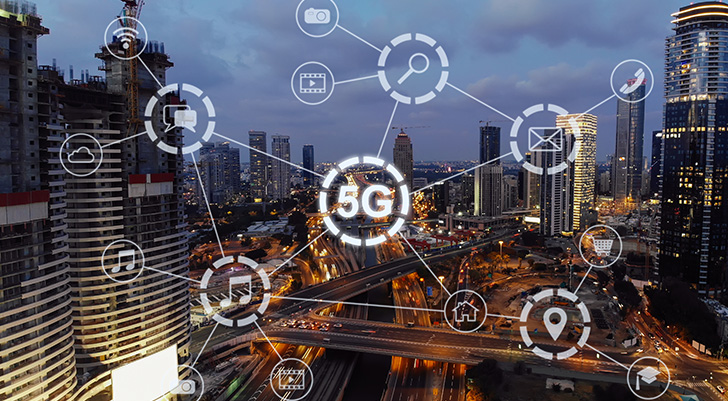
5G vs full fibre – complementary or competitors?
In the last few years, there’s been a lot of talk about 5G and full fibre broadband. How can they coexist, and more importantly, why do they need to?
What is 5G?
5G is an access technology, so the better the fixed network, the better 5G can perform. These have evolved in parallel: the first ADSL with 3G, then VDSL and 4G, and now full fibre and 5G. There would be no 5G without a fibre network.
Fibre has been a massive disruptor in the fixed network space. We’ve created a technology that will last for the next 50 years at least and relies on a new generation core network. Fibre allows us to give a user a dedicated slice of a network which they can then use however they want.
Similarly, 5G is very much an evolution of technology in the way it has disrupted the mobile space. 5G is so different to current access networks because it’s delivering significantly higher performance, at very low-to-great coverage, with (if the network is correctly dimensioned) incredible speeds. The issue for 5G, however, is whether you’ll get it in your flat. If you have a well-isolated flat, it can be very hard for the coverage to penetrate. This is where the need for full fibre comes in.
5G and fibre work together
These new-generation core networks, which are very similar for mobile and fixed, are the brains processing the data and enabling services. Fibre networks (and high-performance Wi-Fi in the case of fixed broadband operations) are the arteries, while mobile operators are the nerves collecting information.
I’ve seen that technology-wise, mobile and fixed networks need each other throughout my career across both fixed and mobile industries. So, will 5G replace broadband? In short, no.
A single fibre network couldn’t connect everyone in London – and neither could a single mobile network. You’d need to build the networks in a completely different way; it would need to be much denser. There isn’t a one-size-fits-all approach to connectivity, so fixed and access networks must work in parallel.
How are 5G and fibre similar?
It’s not a case of 5G vs full fibre at all! There’s no denying that full fibre and 5G are becoming very similar in terms of performance and use, but both networks have to be optimised on use cases; they are fulfilling different needs.
Some of these needs are similar: people want to go online on a basic level. So they’re complementary- but without fibre, there’s no 5G. However, without 5G, you can still have fibre.
How are 5G and fibre different?
One difference is in delivery. The fixed industry is busy delivering basic connectivity for people. The mobile industry is very much used to swapping networks, building a new generation network on top of an old one. Getting UK-wide 5G coverage will happen very quickly, maybe in the next few years. On the other hand, one of fibre’s limiting factors is that it’s slower to deliver.
However, the UK is shifting across to fibre in exactly the right way, starting in high-density areas and multiple-dwelling units, then gradually moving to towns and beyond. Different solutions will work for different neighbourhoods and buildings. This is another reason for the compatibility of 5G and full fibre – we need both to really allow us connectivity everywhere.
Mobile and fixed networks also share some of the same problems. We’re building a fixed network to reach clusters of households, which are connected to exchanges. Between these, we’re having to develop a trunk network. The mobile network is the same. Building a radio site, mobile operators have typically not built backbones. Instead, they have microwaves which become limited. This is where fibre networks can help, as the mobile networks can rely on them.
Two different philosophies complementing each other
5G is bringing speed and capacity on a network optimised for mobility – this is important. It’s been optimised so you can travel around and still receive excellent benefits.
A fibre network is optimised on delivering stable speeds at the end of the line. Fibreoptic is a stationary network, with limited mobility. In both cases, speeds are limited by the end devices – a fibre network is simply more stable.
It’s clear to me that fixed and mobile technologies are, and will always remain, complementary. Plus undoubtedly, 5G is not the last evolution of access technology we’ll see emerge. Technology has never moved more quickly, so stay tuned!



